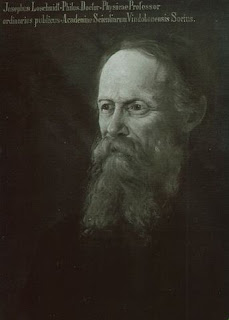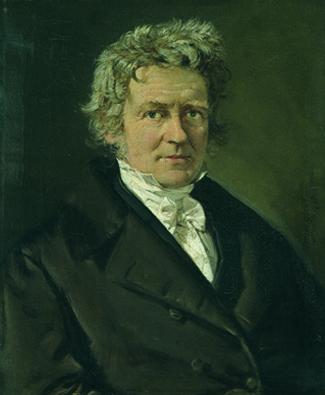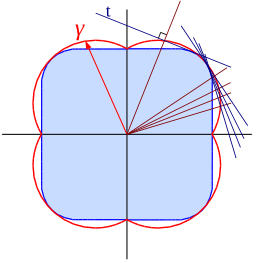So far, I’ve written about people whose names are memorialized in scientific equipment, equations, and units, but not yet in that most permanent place, an element name. And to rectify that omission, today’s subject is Lise Meitner, the eponym of element 109, meitnerium (Mt).
Lise Meitner was born in Vienna in 1878 and although Protestant, had Jewish roots that will be important later. She attended school and after was tutored in mathematics and physics to enable her to pass the Matura exam, which was required before one could study in a university. She went to the University of Vienna, and enjoyed the lectures by, among others, Ludwig Boltzmann. Her thesis was on “Heat Conduction in Inhomogeneous Materials”, where she showed experimentally one of Maxwell’s formulas related to conduction. Here second paper was on Fresnel’s reflection formulae. Both of these had very little to do with the subjects of her later work.
After Boltzmann’s death in 1906, Meitner began helping Stefan Meyer with his work in radioactivity, measuring alpha and beta radiation. Around the same time, Max Planck visited the University, and she decided that she wanted to go to Berlin for a few semesters to learn more about physics. So in 1907, Meitner went off to Berlin for what turned out to be much longer than a few semesters. She attended lectures, but also went to the head of the institute of experimental physics, Heinrich Rubens, to ask if she could work in his lab. He suggested instead that she work with Otto Hahn, who was looking for a physicist who knew something about radioactivity. This work led to two very fruitful collaborations. Meitner also served as Planck’s assistant from 1912-1915.
Her first notable discovery was made around WWI. In 1913, Hahn and Meitner moved their lab from the University of Berlin to the Kaiser Wilhelm Institute für Chemie. This proved to be very useful for their studies of radioactivity, because the new lab was not contaminated by radiation, so they could do more sensitive experiments. One experiment that they were particularly interested in was looking for an element which produced actinium (element 89). Actinium’s place in the periodic table had been determined in 1913, and according to the displacement laws developed by Frederic Soddy and Kasimir Fajans, also in 1913, actinium could be produced by beta emission from radium or alpha emission by an unknown element 91. Fajans and Oswald Göhring discovered a new element when observing the beta-decay of Thorium-234. It had a very short half-life, and, claiming discoverer’s privilege, they named it brevium. It was a beta emitter, however, and could not produce actinium, though they were close--they had discovered element 91, just not the isotope that that would decay into actinium.
Meitner and Hahn worked to improve the technique Fajans had developed to separate brevium, but still wanted to find an isotope that produced actinium. When WWI started, Hahn was conscripted to serve in the special gas warfare unit that was run by Fritz Haber. This, along with the fact that most of the lab assistants were also serving in the war, meant that Meitner did most of the lab work by herself for the next several years, though Hahn was able to come back a few times and consult. Meitner did go off from 1915-1916 to serve as a nurse in Austria, but chafed at all of the time she was not busy and went back to the lab. She worked on substances derived from pitchblende and monitored them alpha emissions to try to discover the isotope that would lead to actinium. She needed more pitchblende, which, during the war, proved difficult. After trying several times, she was finally able to obtain a sufficient amount to determine the half-life of the alpha emitter that she had found. She and Hahn submitted a paper in March of 1918 entitled “The Mother Substance of Actinium, a New Radioactive Element of Long Half-Life”. They called the element protoactinium, which was shortened in 1949 to protactinium. Although they were not the first to discover element 91, Fajans and Göhring agreed that brevium was a silly name for an element that had isotopes with such long half lives, and agreed to the name. Soddy had also been working on the problem, and published their results in June of 1918, but acknowledged themselves beaten, and everyone agreed to the name.
Meitner obtained her own lab in 1917 as part of the department for radioactivity, and she and Hahn ceased their collaboration in 1920. From 1920-1934 she worked with alpha, beta, and gamma radiation and various nuclear processes. She used a Wilson cloud chamber and was the first to observe electron-positron pair formation by gamma radiation. Meitner followed work being done in other labs, and was intrigued by Enrico Fermi’s work in 1934 where he bombarded elements with neutrons and discovered that this could cause nuclear reactions. Irène Joliot-Curie bombarded uranium with atomic particles and found elements similar to lanthanum and barium, which was a very strange result considering their positions on the periodic table. Meitner was very interested, and so she and Hahn resumed working together to look into it. They also invited Fritz Strassmann, who was skilled in chemical analysis, to join the team in 1935. Hahn didn’t believe the results that Joliot-Curie obtained, but repeated the experiments and found the same thing. It was Meitner who convinced Hahn that the lanthanum and barium-like elements they observed were actually those elements and that what he had done was split the atomic nucleus itself.
At the same time, Jews in Germany were beginning to feel the Nazi persecution, and although Meitner was Protestant, she had Jewish heritage. This was not a problem for a while, since Meitner was Austrian, not German. However, when Germany annexed Austria in 1938, everything changed. She requested permission to leave, but it was denied. Then began a chain of scientists all trying to help Meitner. Hahn and Paul Rosbaud arranged for her to leave Austria illegally. Peter Debye (in Berlin) contacted Dirk Coster (in Gronigen) who was able to obtain her entry into Holland and Coster, along with Adriaan Fokker, helped to get her from Berlin into Holland. She left July 13, 1938. From the Netherlands, Meitner went to Sweden with further help from Debye and Bohr. Niels Bohr had begun working around 1932 to find persecuted Jewish scientists positions in foreign institutions, and it was through his efforts that she was given a position at the Nobel Institute for Experimental Physics in Stockholm, although she complained about having a lack of equipment there.
Meitner continued to advise the research on fission, but had to do it from afar. From December 1938 to early 1939 she worked with her nephew Otto Frisch to develop a theoretical interpretation of the fission that Hahn and Joliot-Curie had observed. Meitner and Frisch published the paper together, but because of the political situation, Hahn working in Germany did not want to publish the paper on fission with Meitner, and her name was left off. Hahn received the 1944 Nobel Prize for the discovery of fission, and Meitner was recognized as a collaborator in the presentation speech. Her paper with Frisch, however, had shown that fission could actually occur and that there was enough energy to split the atom, rather than just break off a piece, and that when it did split, it released huge amounts of energy.
In 1943 she was offered a post with the British scientists going to Los Alamos and in 1947 Fritz Straßmann invited her to join him at the Kaiser-Wilhelm-Institut, but she refused both offers. She retired to Cambridge in 1960, joining Otto Frisch and other relatives there. In 1966 she, Hahn, and Straßmann shared the Enrico Fermi Award for the discovery of the fission of Uranium. Meitner died in 1968 and her tombstone bears the epitaph “A physicist who never lost her humanity.”
Now, as I mentioned at first, Lise Meitner has an element named after her, but if you were paying attention, I haven't talked about its discovery. This would not come until 1982 when element 109 was discovered by a group in Darmstadt. Elements 104-109 were all discovered between 1964 and 1982, some of them by several labs, each of which named the elements, and meitnerium got caught up in these disputes, even though the discovery and name were not disputed. The groups at Lawrence Berkley and Dubna both claimed to have discovered elements 104, 106, and 107 first, which made distributing naming rights difficult. The United States proposed a list, but it gave preference to the claims of the scientists from Lawrence Berkley. In 1986, IUPAC and IUPAP set up the Transfermium Working Group to try to settle who discovered the elements first. This, of course, caused responses from the scientists involved, which were published in 1993. Then the Commission on Nomenclature of Inorganic Chemistry met in 1994 and chose delegates to discuss names for the elements 101-109, which were chosen from names submitted by the various labs involved in the disputes—Lawrence Berkeley, Joint Institute for Nuclear Research in Dubna, Russia, and Gesellschaft für Schwerionen Forschung in Darmstadt, Germany. The United States then complained that Seaborgium had been removed from consideration and the American Chemical Society Committee on Nomenclature rejected the recommendations of IUPAC. Finally, in 1997, IUPAC took the issue to the general assembly and proposed a new list, which was finally accepted and element 109 was officially meitnerium.
Selected Works by Meitner
- Lise Meitner, "Über die Entstehung der ß-Strahl-Spektren radioaktiver Substanzen" Zeitschrift für Physik 9, no. 1 (1922) 131-144. DOI: 10.1007/BF01326962
- Lise Meitner and Wilhelm Orthmann, "Über eine absolute Bestimmung der Energie der primären ß-Strahlen von Radium E" Zeitschrift für Physik 60, (1930) 143-155. DOI: 10.1007/BF01339819
- Lise Meitner, Fritz Straßmann, and Otto Hahn, "Künstliche Umwandlungsprozesse bei Bestrahlung des Thoriums mit Neutronen; Auftreten isomer Reihen durch Abspaltung von α-Strahlen", Zeitschrift für Physik 109, (1938) 538-552. DOI: 10.1007/BF01340332
- Lise Meitner and O. R. Frisch, "Disintegration of Uranium by Neutrons: a New Type of Nuclear Reaction" Nature, no. 3615 (Feb. 11, 1939) 239-240. DOI: 10.1038/143239a0
- Lise Meitner and O. R. Frisch, "Products of the Fission of the Uranium Nucleus" Nature 143, (March 18, 1939) 471-472. DOI: 10.1038/143471a0
- Lise Meitner, "Fission and Nuclear Shell Model" Nature 165, 561 (April 8, 1950), 561. DOI: 10.1038/165561a0
References
- Krafft, Fritz. “Lise Meitner: Her Life and Times—On the Centenary of the Great Scientist’s Birth.” Angewandte Chemie International Edition in English 17, no. 11 (1978): 826–842. doi:10.1002/anie.197808261. Full of translated letters to and from Meitner.
- Sime, Ruth Lewin. “The Discovery of Protactinium.” Journal of Chemical Education 63, no. 8 (August 1, 1986): 653. doi:10.1021/ed063p653.
- Sime, Ruth Lewin. “Lise Meitner and Fission: Fallout from the Discovery.” Angewandte Chemie International Edition in English 30, no. 8 (1991): 942–953. doi:10.1002/anie.199109421.
- Kean, Sam. The Disappearing Spoon and Other Tales of Madness, Love, and the History of the World from the Periodic Table of the Elements. New York: Back Bay Books, 2010.
- Westgren, A, “Award Ceremony Speech for the 1944 Nobel Prize in Chemistry”, http://www.nobelprize.org/nobel_prizes/chemistry/laureates/1944/press.html
- Rayner-Canham, Geoff, and Zheng Zheng. “Naming Elements after Scientists: An Account of a Controversy.” Foundations of Chemistry 10, no. 1 (April 1, 2008): 13–18. doi:10.1007/s10698-007-9042-1.
- International Union of Pure and Applied Chemistry in conjunction with International Union of Pure and Applied Physics, “Responses on the Report Discovery of the Transfermium Elements”, Pure & Appl. Chem. 65, no. 8 (1993): 1815-1824.




